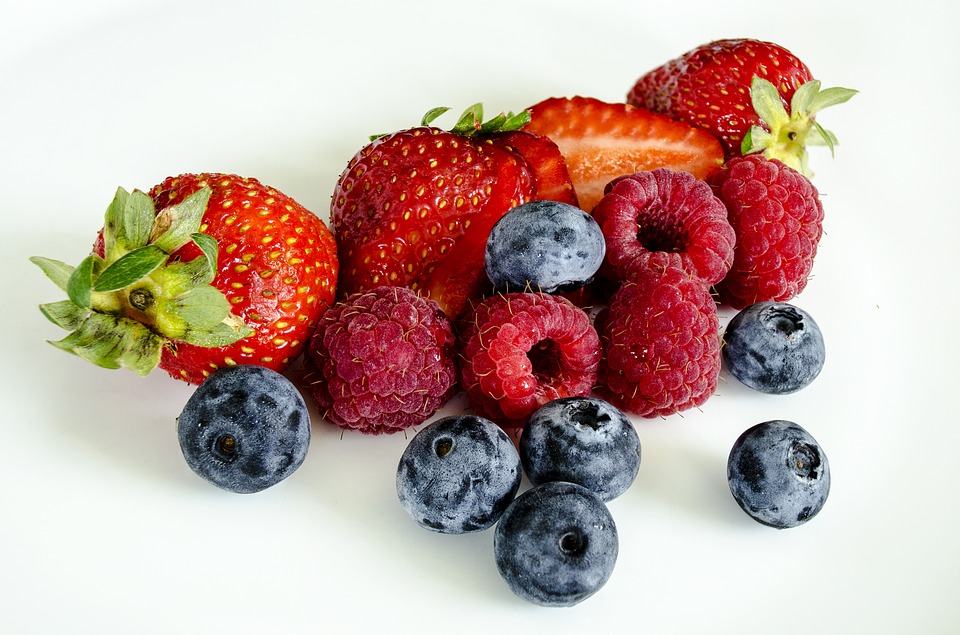
by administrator | Nov 14, 2018 | Healthy, Skin Care
Several generations ago it was common for parents to lay their undressed infants out in the sunshine every day for good health. Our modern minds tend to think, “That’s crazy! Did they slather on sunscreen first?” Although it may not be how we would go about it today, in reality, these parents helped their children get proper vitamin D amounts.
Vitamin D deficiency is an epidemic in the United States; estimates have it affecting as many as 90% of some American adult populations. This is a serious health problem that needs to be addressed.
What Does Vitamin D Do?
Actually considered a hormone, vitamin D is different from the majority of other vitamins since our bodies can make most of what we need, rather than having to rely on food to receive enough of it.
Vitamin D is often referred to as the “sunshine vitamin” since it is made when our bodies change sunlight into chemicals to be used by the body. When UVB rays hit our skin, a substance in our skin changes into D3 which then moves through the bloodstream into our kidneys and liver.
Vitamin D is fat-soluble and resides in the body’s fatty tissues and the liver. It is an essential nutrient for overall health, and research suggests that deficiency can lead to brittle bones, breast cancer, colon cancer, autoimmune disorders, high blood pressure, and heart disease.
How Do We Get Vitamin D?
Exposure to sunlight is the primary way our bodies make vitamin D, and with proper exposure, we can make adequate amounts. However, with the rise in skin cancer over the past decades, many people now wear sunscreen, limiting the opportunity for the skin to do its incredible sunlight conversion.
Balancing the need to get enough vitamin D with the need to protect our skin from damage is tricky. And there isn’t a precise amount of sunlight that doctors can point to as the ideal amount for vitamin D production because it can vary from person to person. In general, experts suggest 10-20 minutes of sun exposure each day, but even this is highly variable depending on the person and their location.
People with darker skin make less of the nutrient than those with fair skin. Young people produce more than older people. And those in the United States who live north of Atlanta will find it almost impossible to get enough UVB exposure during the winter, regardless of how willing they are to go without sunscreen.
5 Symptoms of Vitamin D Deficiency
Blood work ordered by your doctor is the only way to diagnose low vitamin D levels, but here are some signs to watch for and to discuss with your provider:
- Frequent illnesses and infections. We have vitamin D receptors throughout our bodies, including on our immune cells. One of vitamin D’s primary roles is to help our bodies fight off infections. If you find that you are very susceptible to colds, cases of flu, and respiratory infections, you may be low on this vital nutrient.
- Muscle and bone pain. Vitamin D is well known for its role in preventing osteoporosis, as it helps with the absorption of calcium. But it also appears to have anti-inflammatory properties as well. If you are battling chronic bone, back, or muscle pain, you may need to boost your D levels.
- Chronic fatigue. It is easy for adults to ignore their constant feeling of tiredness and chalk it up to being older and busier. And even when patients pursue the cause of their chronic fatigue, vitamin D deficiency is often overlooked. But research shows that extremely low levels of this nutrient lead to chronic fatigue and tiredness.
- Hair loss. This is a symptom that many people quickly attribute to stress. While it’s true that stress can be a cause of hair loss, vitamin D deficiency is worth consideration. Low levels are linked to the autoimmune disorder of alopecia areata in which patients experience extreme hair loss over the whole body.
- Depression. There are vitamin D receptors in the part of the brain that impacts the development of depression, so a deficiency in the nutrient may lead to this mental health disorder. Research in countries such as Norway and Sweden suggests a strong link between low levels of D and depression.
5 Foods That Are High in Vitamin D
Since most of us are unable or unwilling to have adequate unprotected time in the sun for vitamin D production, that leaves food sources as the next option. Here are five foods that will boost your levels:
- Fatty fish. Because vitamin D is a fat-soluble vitamin, it requires some fat to be usable. Fish such as salmon, tuna, herring, and sardines are excellent sources of vitamin D. As a bonus, these fish are full of protein and healthy fats, too.
- Beef Liver. Although organ meat usually is not high on many people’s lists of favorite foods, it is incredibly nutrient-rich, and a fantastic source of vitamin D. In addition to providing high levels of D, beef liver is also rich in iron, making it a powerhouse, nutritionally.
- Egg yolks. Eggs get high praise as being good sources of protein, but they also hold a great source of vitamin D in their yolks. Sadly, egg yolks spent a lot of undeserved time on the western world’s naughty list of foods, due to concerns over cholesterol. Fortunately, that phase has passed, and we now recognize the tremendous health and nutritional benefits of eggs.
- Fortified foods. Many foods such as cereals, oatmeal, milk, and orange juice are fortified with vitamin D. Although these items are not as efficient at delivering the nutrient as other food sources, they are helpful in addressing deficiencies in the population, especially among children.
- Shellfish. Shrimp and oysters are both low-calorie sources of vitamin D, making them a great part of a healthy diet. Oysters have the bonus of being rich in B12 as well.
At Camas Swale we are committed to helping you live the healthiest life possible. If you are noticing any of the above symptoms, contact us today to schedule a time to come in for a visit. We will work to get you back on the road to vitality and good health.

by administrator | Nov 8, 2018 | Flu, Healthy
And so it begins. The leaves are changing, the days are getting cooler, and across the country, the sniffles have started. In homes and schools and offices, tissues and hand sanitizer are making their yearly appearance on desks and counters. Cold and flu season is here. We always hear it phrased together like that – “cold and flu season.” But how do you tell the difference between a cold and the flu?
Both illnesses are viral, not bacterial, and both are circulating through the population all year long. But in fall and winter, the numbers of people infected with either virus climb steadily, sometimes with severe consequences. Why do these viruses suddenly go on the attack? What is the difference between them? And how do you know when it’s time to see a doctor? Let’s walk through that information together here.
Why Now?
Since the viruses responsible for colds and influenza are always around, why do cases of infection pick up steam in the fall and peak in the winter? There isn’t a definitive answer to that, but scientists have come up with a few theories:
- Damp weather. There is some evidence that wet weather makes the viruses easier to spread. Even in tropical countries where there are no significant seasonal temperature drops, influenza is more prevalent during the rainy season.
- School children. After the summer break, schools are filled with hundreds of children in close quarters. Many students have not had a chance to build up immunity to any cold and flu viruses, so they are quick to succumb. They then bring the virus home to their families, and it spreads from there.
- Less time outside. As the days get shorter and cooler, and schools get back in session, people are spending less time outside getting fresh air. Fresh air provides your body’s immune system with much-needed oxygen for fighting off germs.
Just the Facts
Before looking closely at the difference between a cold and influenza, it’s important to dispel some misconceptions and myths about these viruses.
- Influenza is not the same as the stomach flu. Different viruses cause these two ailments. Flu shots will not protect you against the stomach flu.
- Speaking of flu shots, they cannot give you influenza. The virus in the flu vaccine is inactive. Anecdotes of people catching the flu from the vaccine are inaccurate. Those people likely already had the influenza virus percolating in their systems before getting the shot, and the symptoms showed up just in time to convince them that the vaccine caused the illness.
- Being outside in the cold does not give you a cold or any other illness. Contrary to what your grandmother might have feared, this simply isn’t true. The virus must get into your system for you to catch a cold or the flu. It is true, however, that keeping your body warm enough in cold weather does help the body to do its job of fighting off viruses that try to work their way in.
How to Tell the Difference Between a Cold and the Flu
When trying to decide which virus has taken hold of you or a loved one, there are some key pieces of information to notice: onset of symptoms, range and severity of symptoms, and duration of symptoms. Here is an overview of what to look for.
- Onset: Cold viruses typically bring on symptoms slowly. You may feel a little congested or have a scratchy throat off and on for a day or two before fully succumbing to a cold. Influenza, on the other hand, comes on quickly, often within a matter of hours. You may go to work feeling fine, and then by lunchtime feel cold and achy and need to go home.
- Range and severity: Cold symptoms typically stay in the nose-to-throat range. That is, congestion, sneezing, and a sore throat are the most common complaints, with a cough thrown in occasionally for good measure. Influenza brings much more for you to deal with as it attacks the whole body. Headaches, chills, fever, and body aches are highly likely with the flu, as well as a deep and painful cough.
- Duration: Cold symptoms frequently subside within 3-5 days, and may or may not impact daily activities, depending on severity. Flu symptoms, however, can last up to a week or more and pretty much bring normal daily activities such as work and school to a halt.
Cold or Flu, When Should You See a Doctor?
When you are feeling crummy, whether it’s from a cold virus or influenza, usually all you want to do is crawl into bed and wait it out. Sometimes that is the best thing to do, but with these viruses, here are four times that you should get to the doctor instead:
- High fever: For adults, a temperature of 102 or higher that can’t be controlled with fever reducers or that lasts for more than a few days should trigger a trip to the physician. Although viruses do not respond to antibiotics, there are antiviral medications that can bring you some relief. Furthermore, both the cold and flu can develop into a secondary infection like bronchitis or pneumonia, and then an antibiotic may be necessary.
- Intense headaches: If you have severe headaches that do not respond to pain relievers or that impact your ability to think clearly, it’s time to seek medical care. These headaches may indicate that a more serious problem has developed.
- Underlying conditions: Individuals with chronic medical conditions such as diabetes or immune disorders should be quick to see the doctor when cold or flu symptoms present themselves. Even a simple cold can create significant complications for these patients, so it is best to check in with a physician right away.
- Heart palpitations: Dehydration from cold and flu viruses can put your heart under stress and cause rapid pulse. However, viruses can attack the heart lining, causing serious problems. Don’t wait and wonder on this one. Go see the doctor.
Whether you need to get the flu vaccine or think you may already have the flu, the doctors at Camas Swale are here to help. Contact us today, and we will help get you feeling great.

by administrator | Oct 26, 2018 | Healthy, Nutrition
With Halloween right around the corner, many of us are thinking about decorations, costumes, and social gatherings. This is a great time of year to celebrate the Fall and harvest season with friends and family. Inevitably, Halloween candy is tied to the holiday through Trick-or-Treat activities or the offerings of sweets at parties. So how do you decide when to indulge, or when to pass on those favorite snacks? This might be a good time of year to review some basic Halloween candy nutritional information, especially carbohydrates, the primary ingredient in most of these goodies.
So, Just What is a Carb? What is a Calorie?
There seems to be a new diet every week guaranteed to make you lose weight, live longer, or build muscle. While many of these programs are backed by sound scientific principles, others may not be as helpful or safe. How do you know what to believe? A carbohydrate is basically sugars. This includes complex (long strings of sugars called starch or polysaccharides) or simple (such as table sugar or sucrose; fruit sugar or fructose; or blood sugar or glucose). All of these molecules are important for metabolism, especially in the brain where they provide fuel for neural activity (literal food for thought). They are also important in the muscle where they provide energy for physical activity throughout the day. Carbohydrates are nutritionally a good source of energy. They provide about 4 calories per gram, compared to protein that provides 4-5 calories/gram and fats that provide 9 calories/gram.
Calories are a Measure of Energy.
Specifically, one calorie is the energy needed to raise 1 milliliter of water by 1 degree Celsius. In the English system, this works out to 4.1868 Joules – not a very convenient unit for most nutritional purposes. So, when you talk about calorie counting, what is really happening is determining the amount of fuel needed to burn for your body. The average adult will have a resting metabolism around 1,800 calories per day, just to maintain body temperature and keep the lights on. Just like at home, the thermostat usually drives the largest part of the power bill. If you take in more than this without exercising you are in surplus, and this is stored for later as fat. If you take in less you have a deficit, and fat stores are burned for energy instead.
Carbs are Less Calorie Dense Than Protein or Fat. So Why do so Many Diets Focus on Restricting Carbs?
Partially because most carb food sources, especially highly processed foods, do not contain a significant source of essential trace vitamins and nutrients. A notable exception to this is fresh fruits. Further, processed carbohydrates tend to be absorbed much more easily in the gut, increasing sudden surges in sugar levels in the body. This can lead to increased insulin release, and that “carb coma” some people experience after large meals. As you might have guessed over time this can increase the risk of diabetes in conjunction with obesity and decreased physical activity.
Does This Mean No Candy, Doctor?
Not necessarily. Our bodies and brains need some carbohydrate to survive and function better when a balanced diet is presented. Moderation is the key, not complete self-denial. Even “keto” diets still include a small number of carbohydrates for essential processes. The problem is that the sweets we crave are much more readily available in modern society and it is left to the individual to regulate appetite. So, enjoy the holiday and the delicacies that accompany it. Like most things, it is excess that causes problems.

by administrator | Sep 24, 2018 | Healthy
Do you ever think about how dependent your school-aged children are on you as parents? They rely on you for food, shelter, clothing, transportation, answers to endless questions…The list goes on and on. Within that list is brain development. Maybe not in the same sense as clothing and shelter. But indirectly, the formation of your child’s brain is dependent on you. Not just through teaching and observation of behavior, but also on the fuel provided through nutrition.
Food affects our minds in incredible ways. It can help us concentrate or be less focused; it can give us energy or make us tired. Successful lunchtime nutrition can begin with planning. Kids need brain food to help them do their best in school.
Sometimes as a parent it feels like your plate is already full (not just your food plate). Keep reading to find out some simple examples of brain food and how you can incorporate it into your child’s life.
What is Brain Food?
It’s basically self-explanatory- food for your brain. Growing children need an adequate amount of nutrients so that their immune systems are healthy, they have strong bones, and their minds are healthy.
Most processed foods that are, let’s admit, super easy to make and pretty cheap, and are full of refined sugars without much nutrient value. Too much sugar in a meal or snack can lead to a quick spike in your child’s blood sugar that stimulates excess insulin-and then a blood sugar crash. Your child suddenly has no energy–not what he needs to feel in the middle of the school day.
Educate Your Child
 A great way to get your child on board in food changes is to teach them about what foods are harmful and why, and what foods are beneficial and why. Teach them which processed foods cause the blood sugar spikes and crashes leaving them feeling sluggish. Explain to them how a balanced diet will help them to concentrate and learn better at school.
A great way to get your child on board in food changes is to teach them about what foods are harmful and why, and what foods are beneficial and why. Teach them which processed foods cause the blood sugar spikes and crashes leaving them feeling sluggish. Explain to them how a balanced diet will help them to concentrate and learn better at school.
There are endless recipes and food ideas that help with concentration and mental energy. As you explore them, explore them with your child. You can begin your exploration now, by looking through some food ideas below.
Breakfast for the Brain

Oatmeal: This breakfast can be made versatile with different kinds of milk, fruits, or nuts and seeds. What’s terrific about oatmeal in comparison to sugary cereal is that it has more fiber and less processed carbohydrates, slowing uptake and avoiding insulin surges. This helps with concentration and also can lower cholesterol.
Eggs: Eggs can also be served in a variety of different ways, depending on how your child likes them–scrambled, fried, on toast, in a burrito, made into French toast, etc. Eggs contain protein and lipids (fats) that help decrease cravings and appetite, and also help with concentration and energy. Win, win, win.
Snacks for the Brain
 Berries: Berries like strawberries, blueberries, and raspberries all contain antioxidants that help with metabolism. When they are in season, and they are a great option for a fresh local snack. Otherwise, they can be frozen and enjoyed throughout the year. They can also be a source of quick energy containing a fair amount of simple sugars while still providing healthy nutrients.
Berries: Berries like strawberries, blueberries, and raspberries all contain antioxidants that help with metabolism. When they are in season, and they are a great option for a fresh local snack. Otherwise, they can be frozen and enjoyed throughout the year. They can also be a source of quick energy containing a fair amount of simple sugars while still providing healthy nutrients.
Bananas and Nut Butter: This is an easy snack to pack for your kid before school. Slice up some bananas and put some peanut butter or almond butter in a container. They’ll enjoy putting the nut butter between the two banana slices before they devour it. This snack contains protein, carbohydrates, and fats that are necessary for the brain.
Lunches for the Brain

Tuna: The part of your child’s brain that involves memory and attention span can be aided by Omega-3 fatty acids. These essential fatty acids can be found in deep water ocean fish–including tuna, which is paired well with whole wheat bread and pickles. It’s tasty, fun, and will help your child stay focused during the school day.
Pizza: While processed foods such as frozen pizzas may contain a variety of preservatives and also suffer some degradation in the preservation process, freshly prepared pizza can be a balanced source of dietary requirements including lean protein, complex carbohydrates, and fatty acids to necessary for brain development and metabolism. By preparing the pizza in the home the night before, he can be enjoyed the next day at lunch and help maintain focus and concentration.
Dinners for the Brain

Chicken Nuggets: The chicken nuggets that you might buy at a fast food restaurant or from the frozen food section will contain a fair amount of saturated fats and processed carbohydrates. Try making your own chicken nuggets with good quality chicken breast, buttermilk, and whole grain breadcrumbs. You can find a recipe here. You can even get your children involved in the preparation to make them more excited about understanding their food and how it affects their health.
Beans: Beans come in many varieties and even if you have a picky eater, they most likely will like at least one of them. Some common popular varieties include black, garbanzo, or pinto. Beans provide and sustain energy and help control blood sugar levels due to a balanced composition of protein, fiber and complex carbohydrate. They can be incorporated in a variety of different regional and ethnic favorites: burritos, stews, chilis, enchiladas.
Diet high in saturated fats and refined sugars tend to be readily absorbed and contribute to decreased concentration, decreased energy, and obesity. By incorporating a variety of foods that utilize proteins, complex carbohydrates, and unsaturated fatty acids, you can improve overall health and well-being including scholastic performance, concentration, and energy.
Changing the diet of your child can be intimidating, but we hope that with these suggestions for new foods, you are excited to try some new recipes with your child. We care deeply about your child’s health and development, so if you have any questions about anything we’ve written, feel free to contact us.

by administrator | Sep 14, 2018 | Flu, Healthy
Parents around the country are gleeful as they watch their kiddos hop on the school bus or walk through the school doors. Most are ready to get back to a schedule that includes the chance to have enough time to miss their children. No shame in that. So, the big question now is, how do you keep your kids healthy in school?
Every parent knows that the start of the school year also signals the beginning of cold and flu season, especially anywhere kids congregate. The incredible ability for children to share every germ possible, quickly, is almost a superpower.
How do you slow down the spread? How can you help your child remain healthy during the school year, so he doesn’t miss school? Let’s look at some tips and information.
Good Attendance Is Critical
Research is becoming more and more clear about the essential nature of consistent school attendance. Students who miss an average of two or more days of school per month are less likely to graduate high school.
In addition, absenteeism specifically in September is a significant indicator of how much school a child will miss through the remainder of the year. Students who miss 2-4 days of school in September go on to lose an average of 25 days for the year. Clearly, helping your child to start the year with healthy habits will pay off in the long run. So, how do you help your children avoid the gunk, so they don’t have to stay home from school?
8 Ways to Help Keep Kids Healthy in School
When it comes to trying to avoid absenteeism by helping your students maintain good health, prevention is key. Following these tips and habits will go a long way in keeping your children able to go to school.
1. Establish Good Sleep Habits
Quality, consistent sleep is one of the most important needs your child has. Disrupted or inadequate sleep often leads to forgetfulness, irritability, and inattentiveness. Poor sleep also suppresses the immune system, making your child much more likely to catch any bugs going around. Helping your child to develop and maintain good sleep patterns is one of the best things you can do to set him up for school-year health and success.
2. Establish Healthy Eating Habits
Making sure your child has breakfast each day, even if it is a small amount, will help keep his immune system functioning well. Help your child pack lunches with a variety of healthy items. School lunchtimes are often quite short, so be sure the food in your child’s lunch is nutritionally powerful. Nuts, beans, eggs, whole grains, and fresh fruits and veggies will keep your child’s body fueled so that it can do its job of fighting off germs.
It may be hard to believe it’s only been about 150 years since we learned that hand hygiene halts the spread of disease, but it really is that recent. Fortunately, it is not a complicated process, but it does require consistency. Teach your child to wash after using the restroom, after blowing his nose, and both before and after eating.
4. Teach Your Child How to Cover Coughs and Sneezes Correctly
Many adults still fall into old habits of using their hands to cover their mouths when yawning, coughing, or sneezing. But the proper way to cover up is by using the elbow. This method drastically cuts down on the spread of germs since it is unlikely your child is picking up toys, pencils, or food with his elbow. This one habit is a tremendous help in keeping kids healthy in school.
5. Remind Your Child Not to Share Food and Water Bottles With Friends
This is pretty much a surefire way to spread any illnesses that are lurking. It can be a hard habit for little ones to remember when so much of school time is spent teaching them how to share, but keep reminding them that food and drinks can be shared with family, but not with friends at school. And on the topic of sharing, encourage your children not to share combs, brushes, and hair ties to avoid spreading head lice. It’s every parent’s worst school year nightmare.
6. Be Sure Your Child is Getting Plenty of Exercise and Fresh Air
As more and more schools shorten their recess and PE times, it is critical that your child has time each day to play outside. Fresh air gives your child’s body the oxygen it needs to fight off viruses and bacteria, and it boosts the body’s white blood cells for a healthier immune system.
7. Be Aware of Signs of Anxiety or Depression in Your Child
School can be a stressful place for children. Long days with little opportunity for movement can take a toll on a child’s mental health. Add in academic difficulties, bullying, or worries about world problems, and your child could feel overwhelmed quickly. Watch for indications that your child is struggling with anxiety. Things like irritability, inability to sleep, and a lack of appetite may warrant a talk with the school counselor or your child’s pediatrician.
8. Don’t Over-Sanitize
This may sound counterintuitive, but research is becoming more and more clear that children need to spend some time getting dirty. Our gut needs a variety of microbes to help keep us healthy, and playing in the dirt helps us get those microbes. Avoid the urge to buy antibacterial and antimicrobial everything. Over-sanitizing your child’s world likely will have the opposite effect from what you anticipate and could stop him from staying healthy during the school year.
In spite of your best efforts, it is still likely that your child will catch something during the school year. Your child’s school should have an illness policy to help determine if your student needs to stay home. Be sure to follow this policy to avoid further spreading illness at the school.
At Camas Swale Medical Clinic, we look forward to partnering with you and your family as you work toward maintaining good health through the school year and beyond. Reach out today to make an appointment with Dr. Armitage.





 A great way to get your child on board in food changes is to teach them about what foods are harmful and why, and what foods are beneficial and why. Teach them which processed foods cause the blood sugar spikes and crashes leaving them feeling sluggish. Explain to them how a balanced diet will help them to concentrate and learn better at school.
A great way to get your child on board in food changes is to teach them about what foods are harmful and why, and what foods are beneficial and why. Teach them which processed foods cause the blood sugar spikes and crashes leaving them feeling sluggish. Explain to them how a balanced diet will help them to concentrate and learn better at school.
 Berries: Berries like strawberries, blueberries, and raspberries all contain antioxidants that help with metabolism. When they are in season, and they are a great option for a fresh local snack. Otherwise, they can be frozen and enjoyed throughout the year. They can also be a source of quick energy containing a fair amount of simple sugars while still providing healthy nutrients.
Berries: Berries like strawberries, blueberries, and raspberries all contain antioxidants that help with metabolism. When they are in season, and they are a great option for a fresh local snack. Otherwise, they can be frozen and enjoyed throughout the year. They can also be a source of quick energy containing a fair amount of simple sugars while still providing healthy nutrients.

